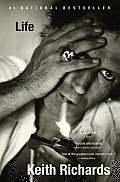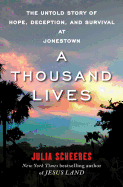National Reading Group Month
October is National Reading Group Month, an occasion marked across the country by librarians, booksellers and others who regularly help tens of thousands of reading groups members find the best books to read and discuss--accompanied, in many cases, by good wine and gossip!
The Women's National Book Association, official sponsor of National Reading Group Month, has compiled the 2011 Great Group Reads, a list of 20 books--17 novels and three memoirs--that the selection committee found will "open up lively conversations about a host of timely and provocative topics." Most of the titles are lesser-known gems from smaller presses and mid-list books from larger houses. WNBA is also holding events around the country. For more information, go to NationalReadingGroupMonth.org.
Several companies help book groups get up and running, select appropriate titles, exchange ideas and more:
Bookmovement.com provides lists of best discussion books based on ratings and comments from 32,000 book clubs as well as book guides, tools for simplifying club communications, etc.
Reading Group Choices just released the 18th annual edition of its Reading Group Choices, which recommends 70 titles, with bibliographic data, book themes, information about the author and discussion starters.
Reading Group Guides offers more than 3,350 guides, has a newsletter, blog--and even a list of books about reading groups.
The American Library Association's Book Group Buzz, a Booklist blog, has tips, reading guides, news and some 130,000 book reviews.
Booksellers are also a rich resource for reading groups. Many bookstores run their own reading groups with a variety of themes or host reading groups. They also advise book groups. Some stores even have special events for book groups, setting aside an evening for book group members to mingle and learn about interesting books for discussion.
Do try any of these places either to help your reading group find more title or for information about joining a book group, one of the best places to meet others who love books and want to share and discuss what they're reading.
Happy reading! --John Mutter



 If you've ever heard the author of My Son: A Memoir sing, you'll know why Harry Belafonte, Jr. is beloved by fans all over the world. His silken voice may be best remembered for "
If you've ever heard the author of My Son: A Memoir sing, you'll know why Harry Belafonte, Jr. is beloved by fans all over the world. His silken voice may be best remembered for " Sing It Pretty is by Bess Lomax Hawes, daughter of American folk music giant John Lomax, a musicologist known for archiving songs from many regions of the U.S. Lomax Hawes followed in her father's footsteps and was instrumental in establishing federally funded programs to preserve American music. A fun sidenote: she co-wrote the Kingston Trio's "
Sing It Pretty is by Bess Lomax Hawes, daughter of American folk music giant John Lomax, a musicologist known for archiving songs from many regions of the U.S. Lomax Hawes followed in her father's footsteps and was instrumental in establishing federally funded programs to preserve American music. A fun sidenote: she co-wrote the Kingston Trio's " Edith Piaf's memoir, The Wheel of Fortune, isn't wholly revealing, which is just as this piaf, or "sparrow" in argot (her birth surname was Gassion) would have wanted it. Her life was filled with ups and downs, glories and mistakes, and she took charge of her mysterious persona, to the detriment of readers. Still, for lovers of Piaf's emotionally charged style, this testament to hanging in will be illuminating.
Edith Piaf's memoir, The Wheel of Fortune, isn't wholly revealing, which is just as this piaf, or "sparrow" in argot (her birth surname was Gassion) would have wanted it. Her life was filled with ups and downs, glories and mistakes, and she took charge of her mysterious persona, to the detriment of readers. Still, for lovers of Piaf's emotionally charged style, this testament to hanging in will be illuminating. The 1960s British rock-and-roll scene in which Life by Keith Richards begins couldn't be more different from Harry Belafonte's 1950s segregated U.S.--but one of the best parts of the Rolling Stones' lead guitarist's memoir is his detailing of his musical influences, many of whom also could have been Belafonte's: Big Bill Broonzy, Billie Holliday, Louis Armstrong and Duke Ellington, among others. --
The 1960s British rock-and-roll scene in which Life by Keith Richards begins couldn't be more different from Harry Belafonte's 1950s segregated U.S.--but one of the best parts of the Rolling Stones' lead guitarist's memoir is his detailing of his musical influences, many of whom also could have been Belafonte's: Big Bill Broonzy, Billie Holliday, Louis Armstrong and Duke Ellington, among others. -- New York Comic Con, the East Coast's largest comic, graphic novel and manga festival, opens this Thursday at the Javits Center in New York City. Day one is restricted to industry professionals, press and VIP ticket holders. Fans can purchase tickets at the door on Friday or Sunday (Saturday-only tickets are already sold out) for $45. The show features expert panels, autograph sessions, previews for upcoming releases and social events. Guests include Frank Miller, Stan Lee, David Cross, H. Jon Benjamin, Kevin Smith, Mark Hamill, Patton Oswalt, Seth Green, and many more. Full guest list and show schedule available at
New York Comic Con, the East Coast's largest comic, graphic novel and manga festival, opens this Thursday at the Javits Center in New York City. Day one is restricted to industry professionals, press and VIP ticket holders. Fans can purchase tickets at the door on Friday or Sunday (Saturday-only tickets are already sold out) for $45. The show features expert panels, autograph sessions, previews for upcoming releases and social events. Guests include Frank Miller, Stan Lee, David Cross, H. Jon Benjamin, Kevin Smith, Mark Hamill, Patton Oswalt, Seth Green, and many more. Full guest list and show schedule available at 










